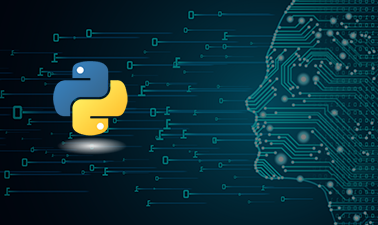Python is a broadly useful programming language (in specialized terms).
As indicated by the Python specialists, it is the simplest programming language to learn and execute in the generation. A few people learn Python for making sites. Like this, such a significant number of people groups are learning Python for an alternate reason. The primary motivation of this article is to show why we should learn Python for data science.
What is Python?
The word Python is taken from the Guido most loved network show "Monty Python's Flying Circus". In this language no stresses over in the event that anybody is new to the programming or have been specialists in different dialects. It requires exceptional grammar that centers around comprehensibility. Along these lines, designers can peruse and decipher Python code in all respects effectively contrast with other programming dialects. It can bolster diverse working frameworks like Linux, Mac-OS, and Windows. As indicated by the Indeed Job, Python is the generally utilized language in all product organizations. Numerous ventures can utilize Python to mechanize the convoluted undertaking of such organizations are Google, Instagram, YouTube, NASA is utilizing Python as a back-end improvement. It is the most significant language in Data Science. In the event that anybody will learn Data Science, it's compulsory to meet with Python.
Here are Three Well-Known Reasons to Use Python
- It's reasonably simple to decipher and learn
- It can deal with various information structures
- It has exceptionally amazing information perceptions and measurable libraries.
Data Science
Information Science has been coasting for the better part most recent 30 years and it very well may be utilized to substitution for "software engineering" in 1960. after 15 years the term is utilized for information handling in a few applications. As indicated by the survey of Harvard Business article in 2012, calling Data Science as "well-known occupation for the 21st century".
Before the Data Science pattern, people groups who used to work with information are called Computer Scientists, Business Analysts, and Statisticians. Presently they are called Data Scientists. Information Scientists are people groups who take a shot at making the information helpful in different ways with a blend of coding and measurable aptitudes. It is a major field for Big Data which gives meaning data to all substantial measure of complex information. It enables the organization improvement to like gathers, investigate, and deciphers expansive volume of information. Information Science experts actualize factual models to investigate the information and utilize distinctive examination discover patterns, examples, and association with datasets. These days, through Data Science organizations, are utilizing enormous information to give great outcome to the clients. Banking Institutes are exploiting on huge information to build their misrepresentation recognition victories. How about we get to the meaningful part on which we talk about these issue Python for Data Science.
Python for Data Science
Let's consider the following languages:
Indeed, it's excellent to know four dialects for data science. Be that as it may, somebody is new to the coding for those individuals to get Python.
Why is it advantageous to learn Python for data science? Python is simple and fun. It reasonable numerous bundles for less complex Analytics ventures (e.g., exploitative examination, division, etc.) and for advanced data science (e.g., building AI models). These days work markets require more people to be information experts with great Python knowledge.
The Premise of Python for Data Science
Variables: In Python no compelling reason to announce the factors before utilizing them. Factors have held memory area for qualities.
Data Types: It underpins endless information types. The rundown of information types are – Strings, Dictionary, and Numeric.
Operators: Operators handles the Operands. Operands are – Assignment, Comparison, Logical, Bit-wise, Arithmetic, and Identity.
Loops: Loops can test the condition before execution. They are 3 types – For, While, and Nested circles.
Functions: By utilizing the capacity we can spare the time. It makes progressively coherent by partition the code into valuable squares. I trust this blog may get some thought for you on Python for Data Science. People groups who need the top to bottom Knowledge, Get in contact with Python Online Training


